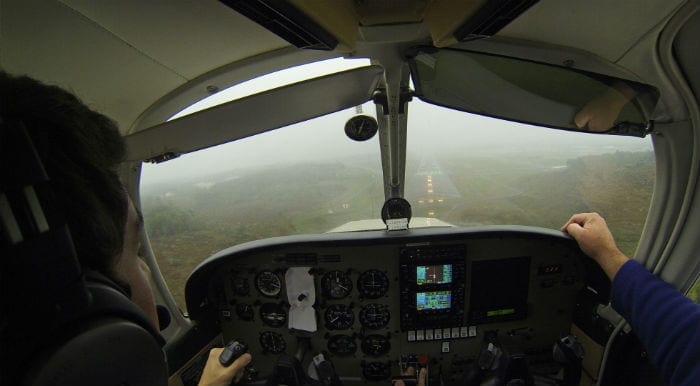1 min read
Click on image for full size.
The view: Final ILS runway 11 at KBED
The pilot: Sandro Salgueiro
The airplane: 1999 Piper Warrior (PA-28-161)
The mission: Last instrument lesson before IFR checkride
The memory: The feeling that I could do this for real and without gyros
Want to share your “Friday Photo?” Send your photo and description (using the format above) to: [email protected]
Latest posts by Sandro Salgueiro (see all)
- Friday Photo: Partial Panel ILS - July 7, 2017





The fatality proportion for real life vacuum failures in IMC is terrible. Don’t get too chuffed about it.
Yes, it’s a downright emergency. This accident came to my mind: https://www.youtube.com/watch?v=kF_x4IU8Ig4&t=3s
Sandro, yes, you should be able to complete an approach while flying partial panel. But remember, a vacuum failure can be insidious in its slow and methodical way of creeping up on you as it gradually skews the gyros. It won’t announce itself like your instructor does when he covers up the instruments. But remember this also: Charles Lindbergh flew across the western U.S. at night and all the way across the Atlantic – much of it at night and in IMC – in ‘partial panel’ operations. And his airplane was inherently unstable. A really good pilot doesn’t need the gyros, but they do serve to make life easier. Keep your head and your wits about you. Remain calm. You’ll have enough left to get you home. Good job.
Vacuum failure can be remedied somewhat with a backup vacuum system, such as the type that operate off manifold pressure or a second vacuum pump. For IFR, a vacuum backup should be seriously considered. But also consider that the gyro instrument can fail mechanically and the vacuum system is operational.
The Spirit of St. Louis did not have an AI or DG (both gyro driven). Lindbergh had both a wet compass and a more accurate electric induction compass similar in concept to a mag flux compass for heading information. Most important, he had a turn and slip (dog house) indicator and this would have to be gyro driven. Assuming that you don’t have modern AHRS type indications, I don’t think partial panel can be flown without one of the operating instruments having a gyro in it.
Sandro is flying partial panel with a turn coordinator not blocked (the AI and DG appear to be covered by paper). So he is flying with an gyro that provides turn (bank) information just like Lindbergh. Knowing how to fly the turn coordinator or turn and slip without the DG and AI is key to partial panel operation. Clearly it is not easy to fly with just a turn and slip (or turn coordinator), but it can be done and the method is taught as part of partial panel procedures. Lindbergh’s panel would be partial panel by current standards. But it did have a gyro.
Jack